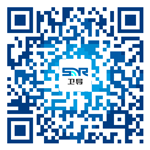In the testing fields of automobiles, mobile phones, RTK, and satellite navigation terminals, it is often necessary to use economical and realistic navigation signal acquisition and playback to test and analyze products. Industry leading engineers often combine laboratory simulation testing with real road testing in the development process to pursue higher performance in order to achieve perfect products. The GNSS signal recording and playback device can record and playback GNSS multi constellation full frequency signals with high fidelity, synchronously record standard serial port data, and perform repeated playback tests under laboratory conditions, achieving real scene reproduction of road testing.
The GNSS signal recording and playback instrument is suitable for various complex field tests and experimental data collection and analysis, which can effectively reduce the number of on-site experiments, shorten the time of field experiments, reduce research and development costs, accelerate product development speed, and shorten the research and development cycle.
01

On December 22, 2021, at an automobile manufacturing plant in Changchun, Jilin Province, known as the "Spring City of the North", the information technology team of Weidao officially delivered the RPS4000 GNSS signal recording and playback instrument with the most comprehensive and optimal performance to date to users, and was invited to take an administrative level model from China's independent brand "King Level" for actual road testing, The powerful multi constellation full frequency signal recording and playback capabilities of RPS4000 have been directly verified: the depth of recorded signals can reach up to 16 bits (16 bit I and 16 bit Q), the built-in battery and on-board DC power supply can maintain uninterrupted operation throughout the day, the carrier to noise ratio loss of recorded signals is better than 0.5dB, and the differential positioning accuracy is better than 0.02m. A simple and efficient WEB control interface allows users to operate devices through a computer browser connection, as well as quickly access and query status through the device's built-in simple display screen and physical buttons. Convenient for outdoor use without the constraints of PC connection.
This trip to Changchun has helped us establish a deeper cooperative relationship and high level of technical mutual trust with users, and fully demonstrated the strong technical strength and brand charm of domestic brands.
02
I believe many of you here have the same "choice difficulty" as the editor, and how to choose a cost-effective GNSS signal recording and playback device has become a problem that troubles most people. Here, the editor also summarizes some experiences and insights for everyone to refer to:
★ Multiple constellations and frequencies
In addition to supporting the recording and playback of GNSS all constellations and multi frequency (L-band) signals, it can also record and playback Beidou RDSS downlink S and uplink L-band signals.
★ Independent RF channel
It has 4 independent RF channels and supports real-time recording of global navigation satellite system (GNSS) full frequency band RF signals, including the S-band.
★ Recording signal bandwidth
The maximum recording signal bandwidth is 100MHz, which can achieve any combination of GNSS constellations and signals, and has sufficient scalability to adapt to future planned new signals.
★ I/Q quantization digits
2. 4, 8, and 16 bit I/Q quantization bits are optional, meeting the requirements of high fidelity recording and post analysis for pure navigation signals and complex environmental interference signals.
★ Carrier to noise ratio loss
Under 16 bit deep sampling, the carrier to noise ratio (C/N) loss is better than 0.5dB.
★ Volume and weight
The size of a single A4 paper, with a battery on the host and a hard drive not exceeding 2.5kg.
★ Endurance
The single battery has a battery life of 2 hours and supports multiple external power supply methods, including adapters, on-board DC cables, and power banks.
★ Simple operation
The HTML interface, LCD screen, and physical buttons make device operation simpler and enable quick setup.
03
Product Features
RPS4000 is a lightweight GNSS signal recording and playback device that supports real-time recording of up to 4 independent RF channels of Global Navigation Satellite System (GNSS) RF signals. It can be recorded in real-time in fixed or mobile outfield environments, as well as signals generated by standard GNSS simulators, including BDS, GPS, GLONASS, Galileo, SBAS, IRNSS, and QZSS.
RPS4000 can synchronously record standard serial port data when recording GNSS signals. Supports Ethernet control, can be accessed and configured using WEB or software, and recorded data can be exported through USB or network port. The device supports functional performance testing of navigation receivers, research on navigation algorithms, and can also be used for receiver detection, maintenance, and troubleshooting under field conditions.
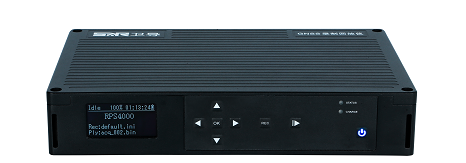
RPS4000 GNSS signal recording and playback instrument
★ Lightweight, thin, and small, the total weight of the RPS4000 machine (including batteries) does not exceed 2.5kg.
★ RF signal recording and playback system with 4 independent adjustable bandwidth channels, capable of simultaneously recording GNSS full frequency band (including S-band) satellite signals.
★ RPS4000 can be installed on vehicles to record GNSS signals on the driving route, and can synchronously record standard serial port data (RTCM); Afterwards, unrestricted playback testing was conducted in the laboratory.
★ The I/Q quantization bits of 2bit, 4bit, 8bit, and 16bit are optional, ensuring that the RPS4000 can achieve high fidelity recording of multipath reflection and signal occlusion in the environment, maximizing the restoration of real scenes.
★ Built in standard GNSS receiver module, it can be used for online real-time signal monitoring and can also serve as a reference or comparison receiver for users to test and compare.
The RPS4000 can work independently for 2 hours without external power supply, and is compatible with PC power adapter and on-board DC power cord power supply mode, fully meeting users' endurance requirements in various scenarios.
04
Product specifications

05
Simple operation
RPS4000 has an internal WEB network server that can be used for configuration, and can be accessed and operated through any one computer browser, without being constrained by operating system version and software compatibility restrictions; At the same time, the WEB server control system has a simple operation design and intuitive display interface, allowing users to quickly get started with operating methods and bring a different user experience.

▲ WEB server status information interface
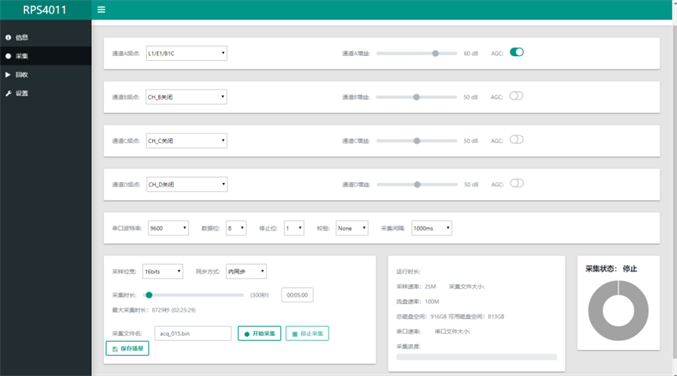
▲ WEB Server Collection Interface
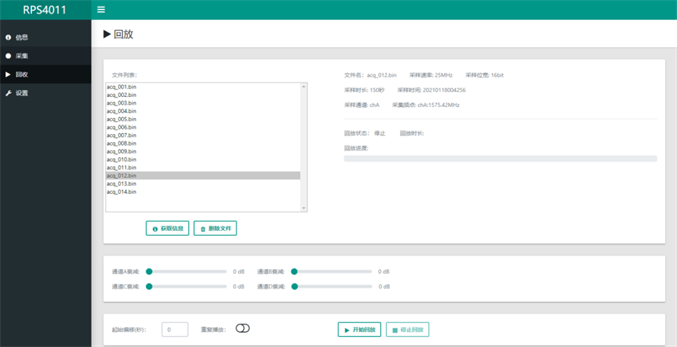
▲ WEB server playback interface
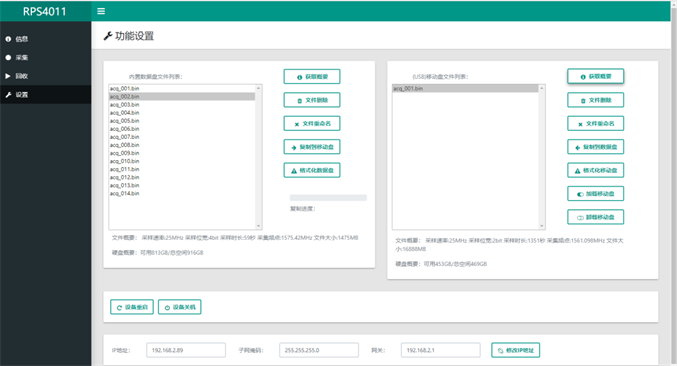
▲ WEB server function setting interface
Even if there is no computer nearby that can connect to a browser, the RPS4000 can easily operate without the computer and control GNSS signal recording, storage, and playback through a 2.4 inch LCD screen and physical buttons.
06
Real road test
In multiple follow-up tests conducted by the company's R&D testing team, the editor recorded the entire process and measured data for everyone, and the RPS4000 once again withstood the test and "devastation".
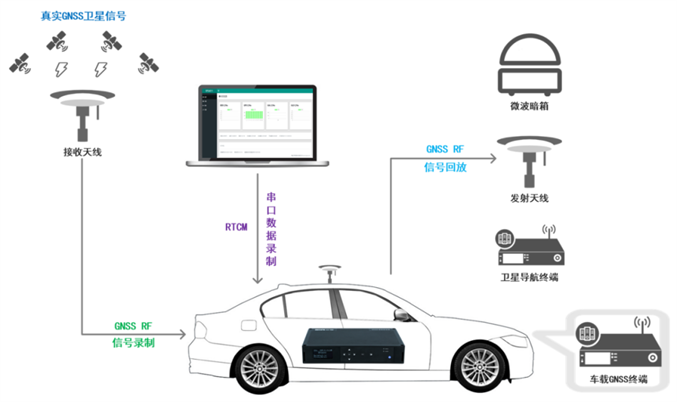
test result
Static differential refers to the device being in a static state when collecting signals from a full frequency band data acquisition and playback device, collecting data from a point to the sky; Dynamic difference refers to the full frequency band data acquisition and playback device collecting signals when the device is in a sports car motion state, collecting a segment of trajectory data from the sky.
一、 Playback signal positioning accuracy
1) BDS B1/BDS B3/GPS L1 frequency point acquisition_ Static differential
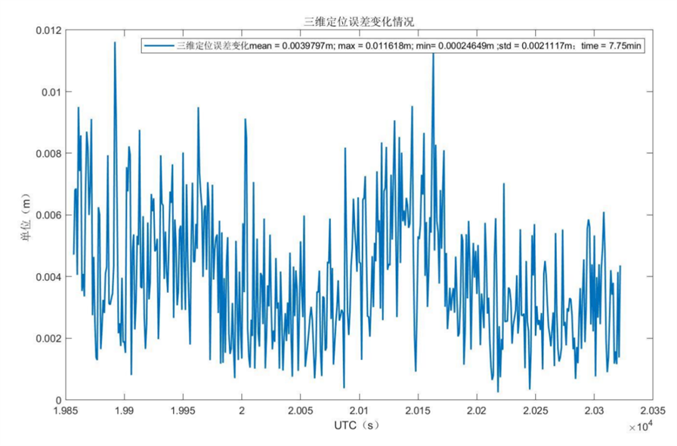
▲ Curve of three-dimensional positioning error variation
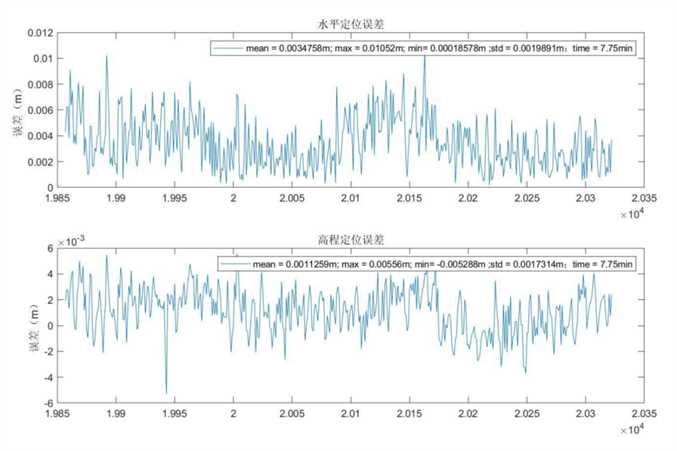
▲ Curve chart of horizontal and elevation positioning error changes
2) BDS B1/BDS B3 frequency point acquisition_ Dynamic difference
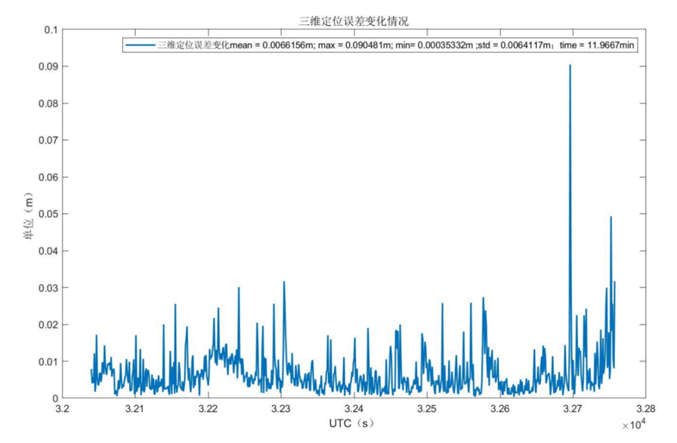
▲ Curve of three-dimensional positioning error variation
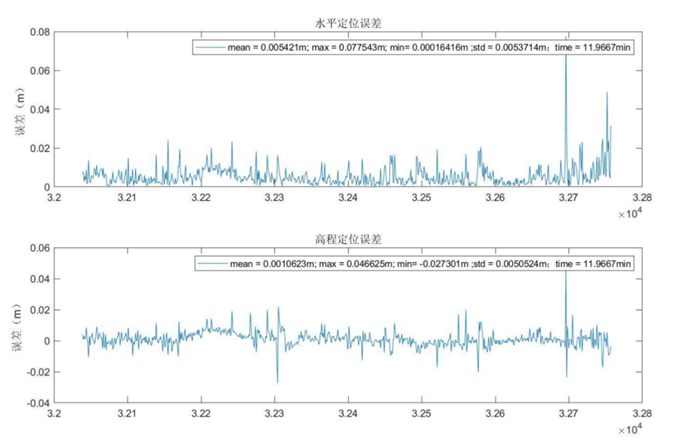
▲ Curve chart of horizontal and elevation positioning error changes
2、 Airborne noise ratio loss during playback signal reception
1) Collect BDS signal carrier to noise ratio loss value
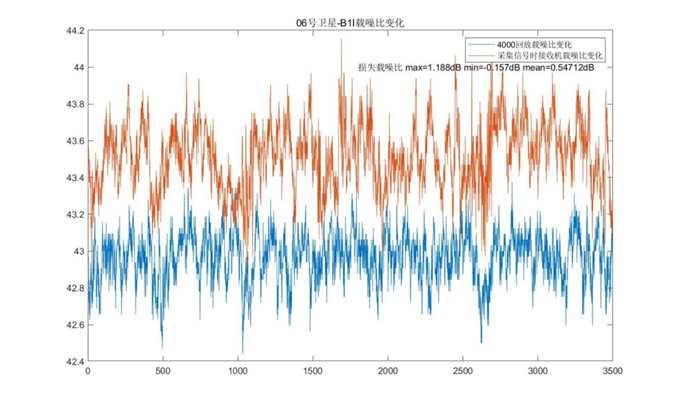
▲ Collect a comparison chart of BDS signal carrier to noise ratio loss
2) Collect GPS signal carrier to noise ratio loss value
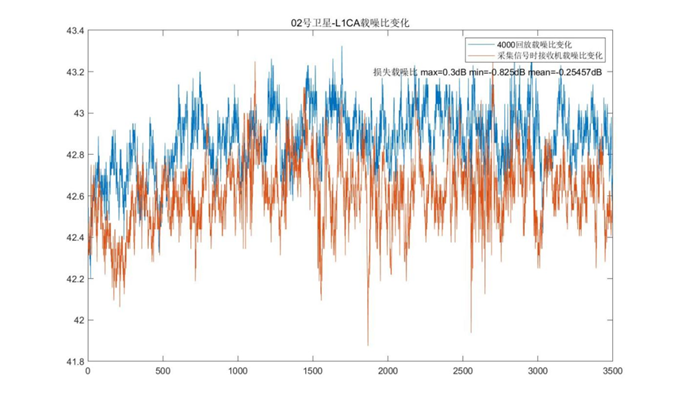
▲ Comparison Chart of GPS Signal Carrier to Noise Ratio Loss Acquisition
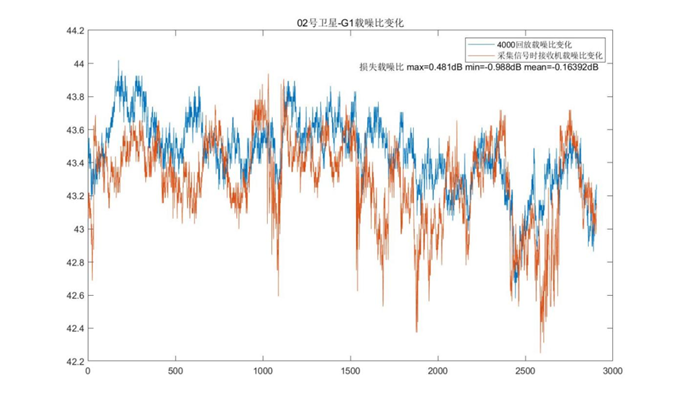
▲ Comparison of carrier to noise ratio loss of GLONASS signal acquisition
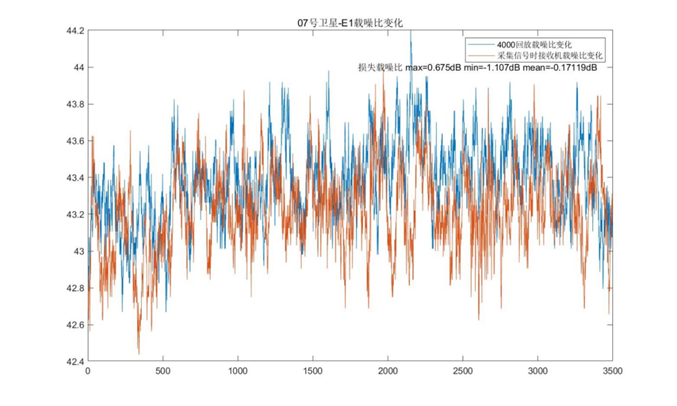
▲ Collect Galileo signal carrier to noise ratio loss comparison chart
Test Conclusion
After multiple repeated tests, by replaying the GNSS signal collected by RPS4000 to the receiver for testing, the static and dynamic positioning accuracy of RTK is better than 0.02m; The carrier to noise ratio loss of the collected signal is 0.5dB better.
The GNSS signal recording and playback instrument RPS4000 has been widely used in real road sports car testing, vehicle testing, RTK differential testing, mobile phone testing, production line testing, navigation chip and module testing, as well as other navigation testing in environments without GNSS signal coverage. Compared to "actual satellite testing in the sky" and "laboratory simulation satellite testing", it has the characteristics of low investment, good repeatability, good convenience (suitable for laboratory, production line, and sports car testing), and high accuracy (can be combined with actual environment).




